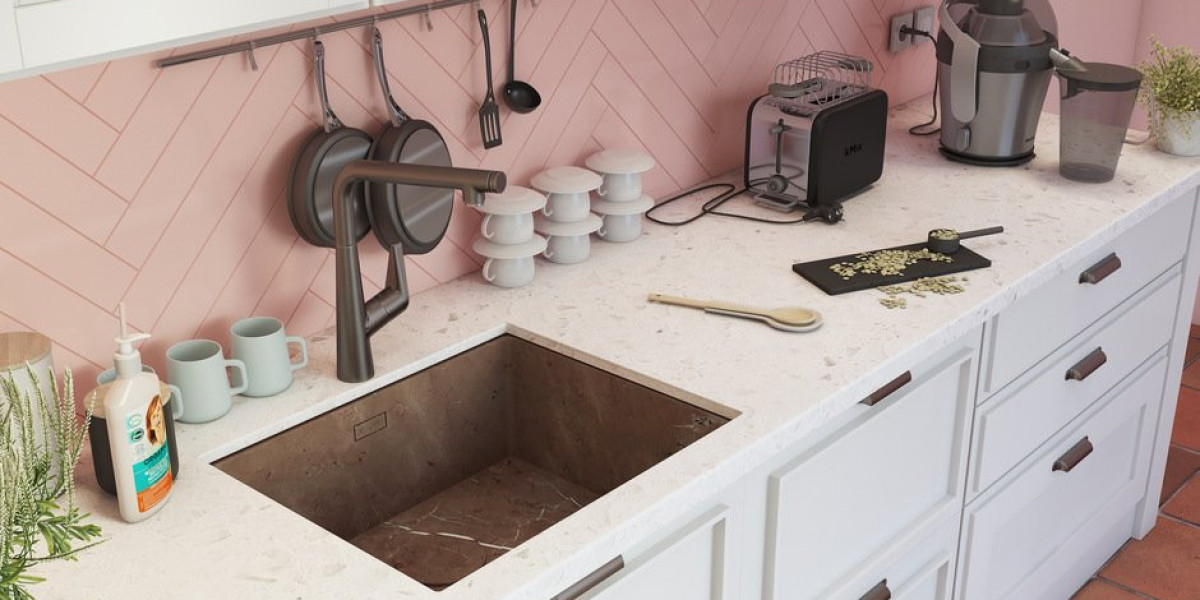Upgrading your kitchen sink might seem like a small home improvement project, but it can make a big impact on both the functionality and style of your kitchen. Whether you're doing a full renovation or just replacing an old sink, approaching the upgrade strategically will save you time, money, and stress. Here’s a detailed guide on how to upgrade your kitchen sink efficiently—without unnecessary delays or costly mistakes.
1. Define Your Goals
Before anything else, ask yourself why you're upgrading your sink. Is your current one too small? Does it lack features like deeper basins or a pull-down sprayer? Are you upgrading for aesthetic reasons—to match new countertops or cabinetry? Clarifying your goals will help guide every other decision, from the type of sink you buy to the installation method.
2. Choose the Right Sink Type
There are several types of kitchen sinks, each with pros and cons depending on your space and cooking habits:
Top-mount (drop-in) sinks are easy to install and affordable.
Undermount sinks offer a seamless look and easier countertop cleanup.
Farmhouse (apron front) sinks make a design statement and offer deep basins.
Integrated sinks, made from the same material as your countertop, offer a clean, modern look.
Your choice here should match your kitchen's design, your functional needs, and your budget.
3. Measure Twice, Cut Once
Sink installation can go wrong quickly if the measurements are off. Before ordering anything, measure your current sink—length, width, and depth—as well as the space under the cabinet. Check that the new sink and its accessories (like garbage disposals or dish drying racks) will fit.
Also, consider the number of bowls and drain placements. For example, if you want to move from a double-bowl to a single-bowl sink, you'll need to check if your plumbing can support that change without major modifications.
4. Know Your Materials
Kitchen sinks come in a variety of materials, and each has its own benefits:
Stainless steel is durable, lightweight, and easy to clean.
Granite composite resists scratches and chips but is heavier and more expensive.
Fireclay looks elegant and is resistant to stains but may crack under heavy impact.
Cast iron with enamel offers a classic look and lasts long but is heavy and can chip over time.
Choose a material that balances style, durability, and maintenance level. When in doubt, check with a kitchen sink supplier for recommendations tailored to your household’s needs.
5. Upgrade the Fixtures Too
A new sink deserves new fixtures. Upgrading your faucet can drastically improve your sink's functionality. Consider features like:
Pull-down or pull-out sprayers
Touchless operation
Water-saving aerators
Soap dispensers and filtration systems
Also, ensure your faucet matches the hole configuration of your sink or countertop—or be ready to drill new ones.
6. Plan for Plumbing Adjustments
Even a small change in sink size or layout can affect the plumbing. If you're moving the sink to a new location or switching from top-mount to undermount, consult a plumber early in the process. This prevents costly surprises later.
If your home is older, it might be a good opportunity to upgrade old pipes or add shutoff valves. It's an extra cost upfront but can prevent leaks and damage down the line.
7. Consider Function-Boosting Add-ons
Modern sinks aren't just about washing dishes. You can now add accessories to turn your sink into a multi-tasking hub:
Cutting boards that sit over the sink
Colanders for easy rinsing
Roll-up drying racks
Bottom grids to protect the sink surface
These extras can help maximize space in small kitchens and make meal prep more efficient.
8. Hire a Professional—If Needed
If you're confident in your DIY skills, installing a sink might be doable. But if your upgrade involves changing plumbing, cutting countertops, or installing an undermount model, consider hiring a professional. Mistakes in sink installation can lead to water damage or costly repairs.
Ask for quotes from local contractors or check with your kitchen sink supplier—they often have trusted installers they work with.
9. Source from Reputable Sellers
Avoid the temptation to buy the cheapest sink online without checking reviews or return policies. Reputable kitchen sink manufacturers typically offer warranties, better customer service, and higher-quality materials. You’ll also find more support if you need replacement parts later.
Visit a showroom if possible to see sinks in person. Get a feel for the size, weight, and finish. If ordering online, double-check specifications and delivery timelines.
A good tip: buy your sink and faucet from the same source to ensure compatibility and streamline support in case of problems.
10. Don’t Forget the Cabinets
A deeper or differently shaped sink may require modifications to the cabinet below. If your existing cabinet isn’t compatible with the new sink—especially for farmhouse styles—you might need a custom cabinet or reinforcement.
Make sure your installer checks this before installation day. Reinforcing the cabinet ahead of time prevents sagging or cracking under the weight of a heavier sink.
11. Final Touches and Clean-Up
After installation, run water through the system and check for leaks. Look at all connections—supply lines, drainpipes, and around the rim or sealant areas. Let water sit in the sink and observe if it drains properly.
Finally, clean everything thoroughly and reseal areas if needed. Some materials (like granite or fireclay) benefit from occasional sealing or conditioning to keep their finish intact.
Final Thoughts
Upgrading your kitchen sink doesn't have to be overwhelming. With a bit of planning, smart product choices, and help from experienced professionals, the process can be smooth and rewarding. Your new sink can become more than just a place to wash dishes—it can be a centerpiece that enhances the workflow and style of your kitchen.
Remember, working with reliable kitchen sink manufacturers and choosing products from a trusted kitchen sink supplier will help ensure quality and long-term satisfaction. A well-chosen sink upgrade not only improves your kitchen's utility but also boosts your home’s overall value.








